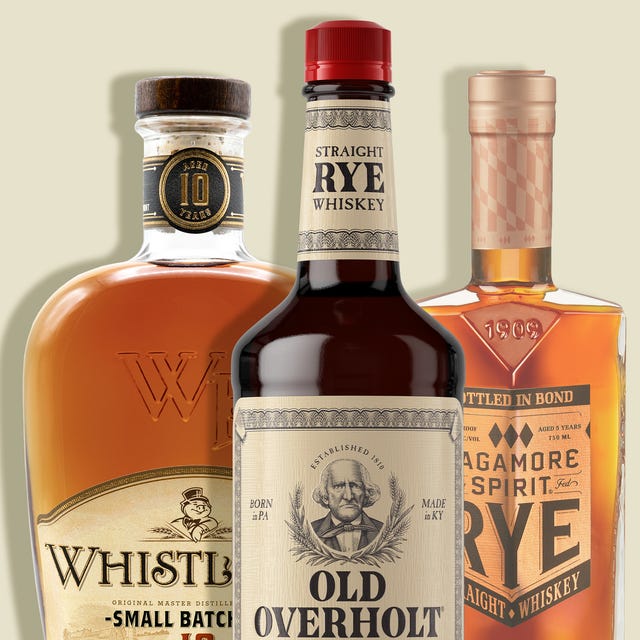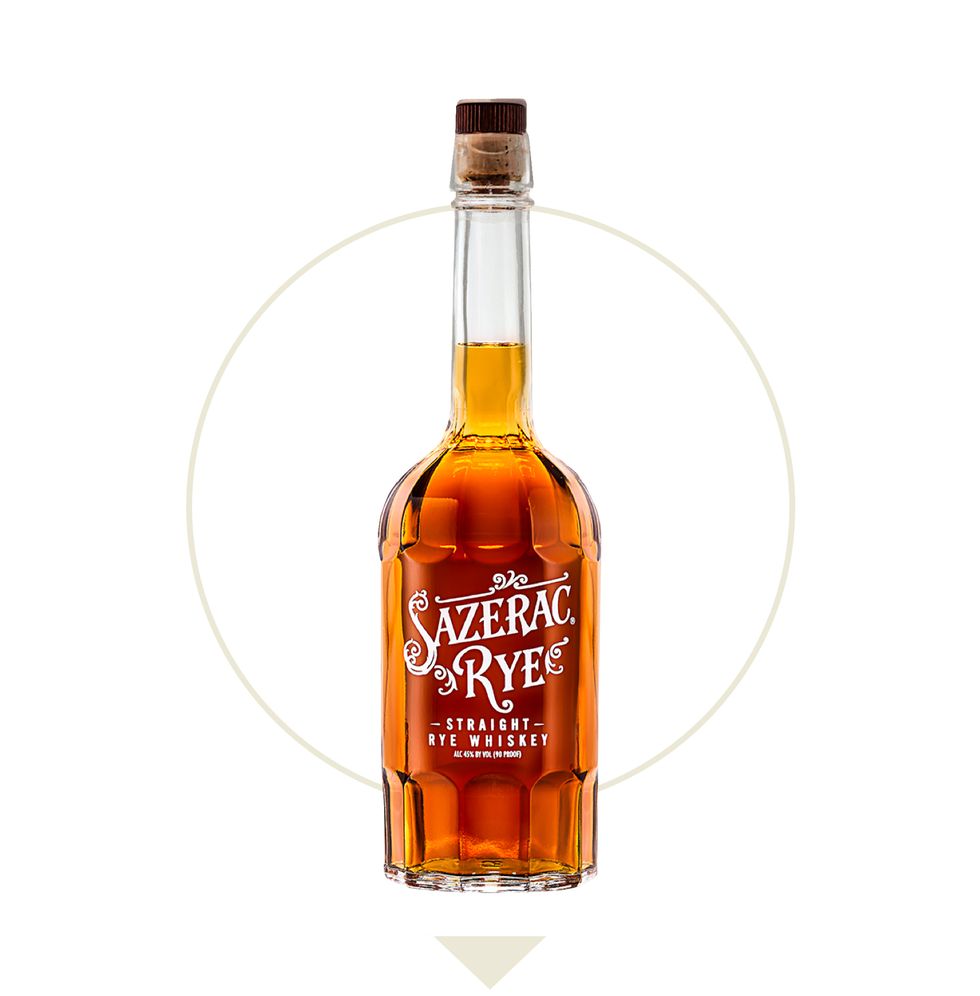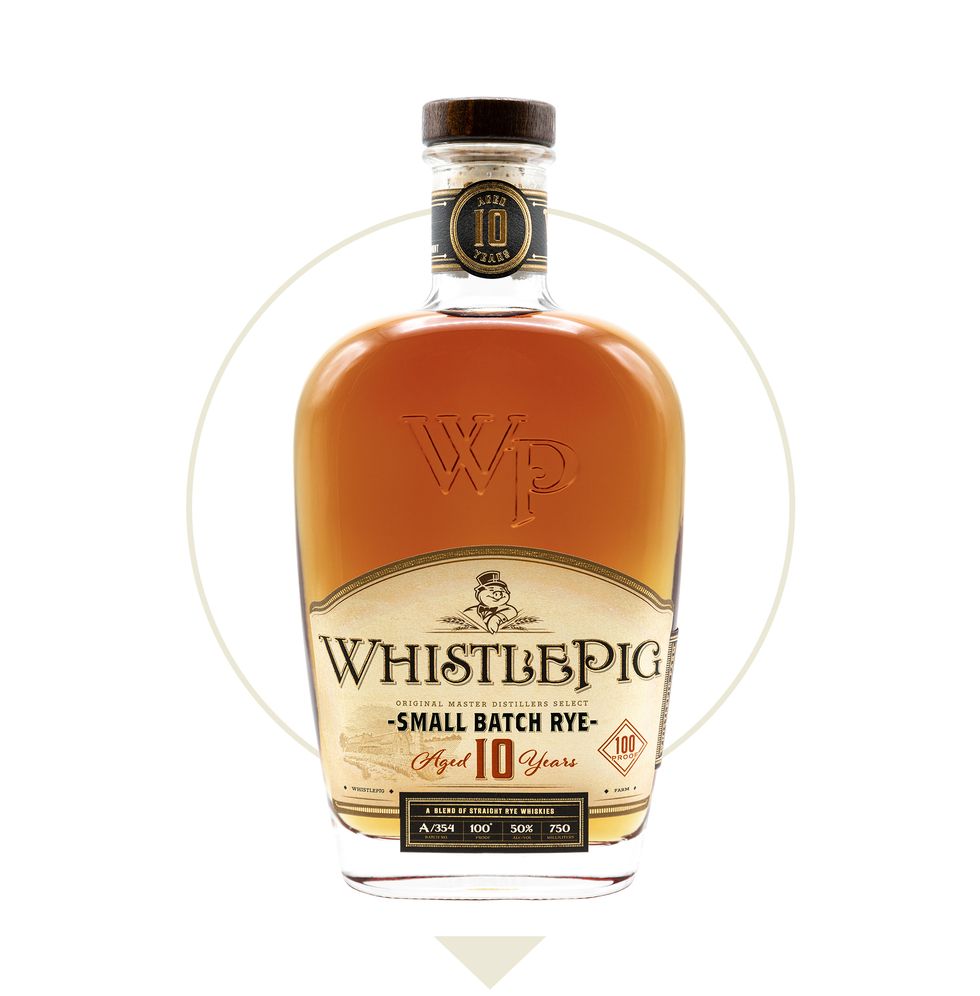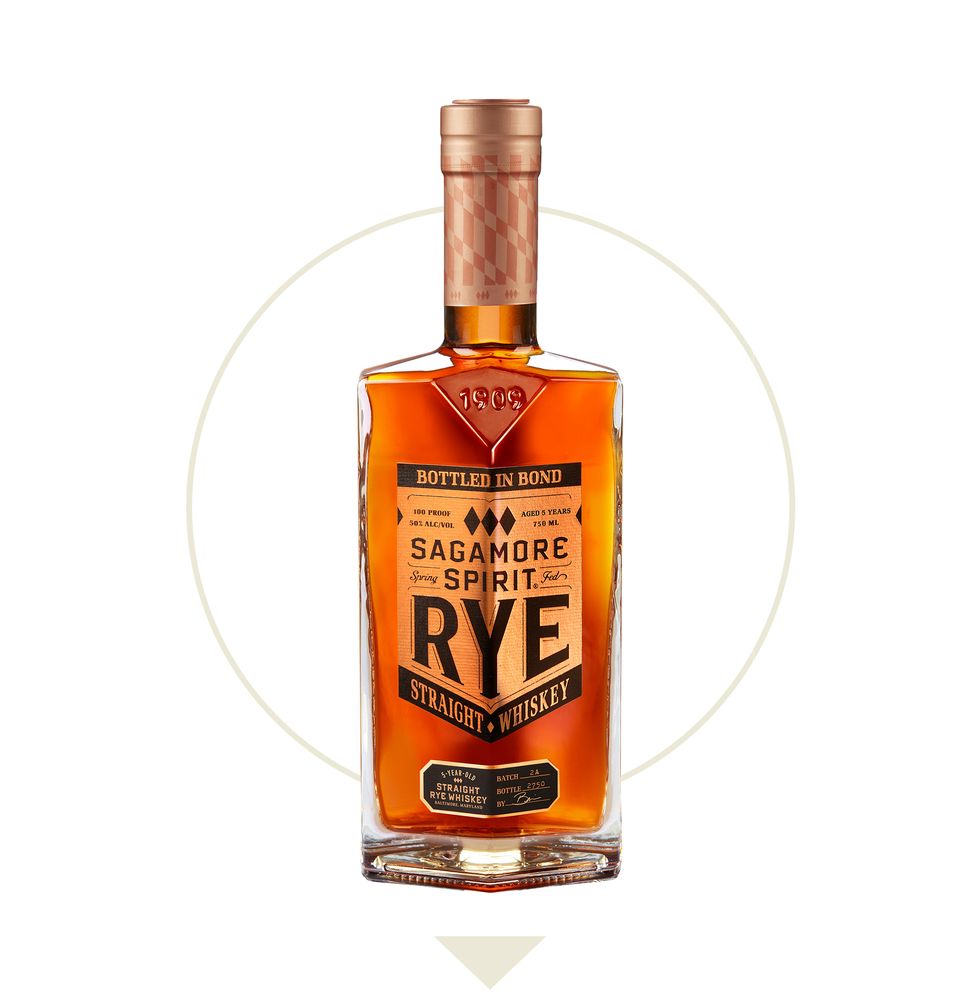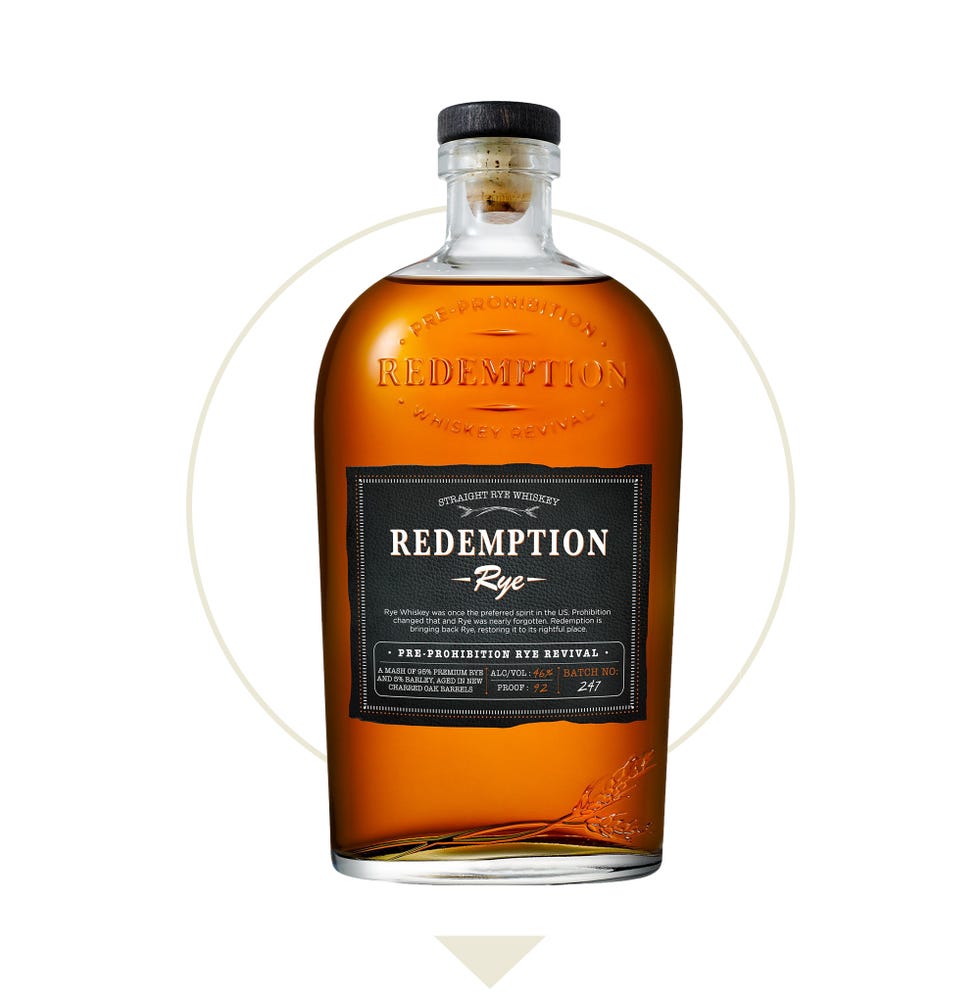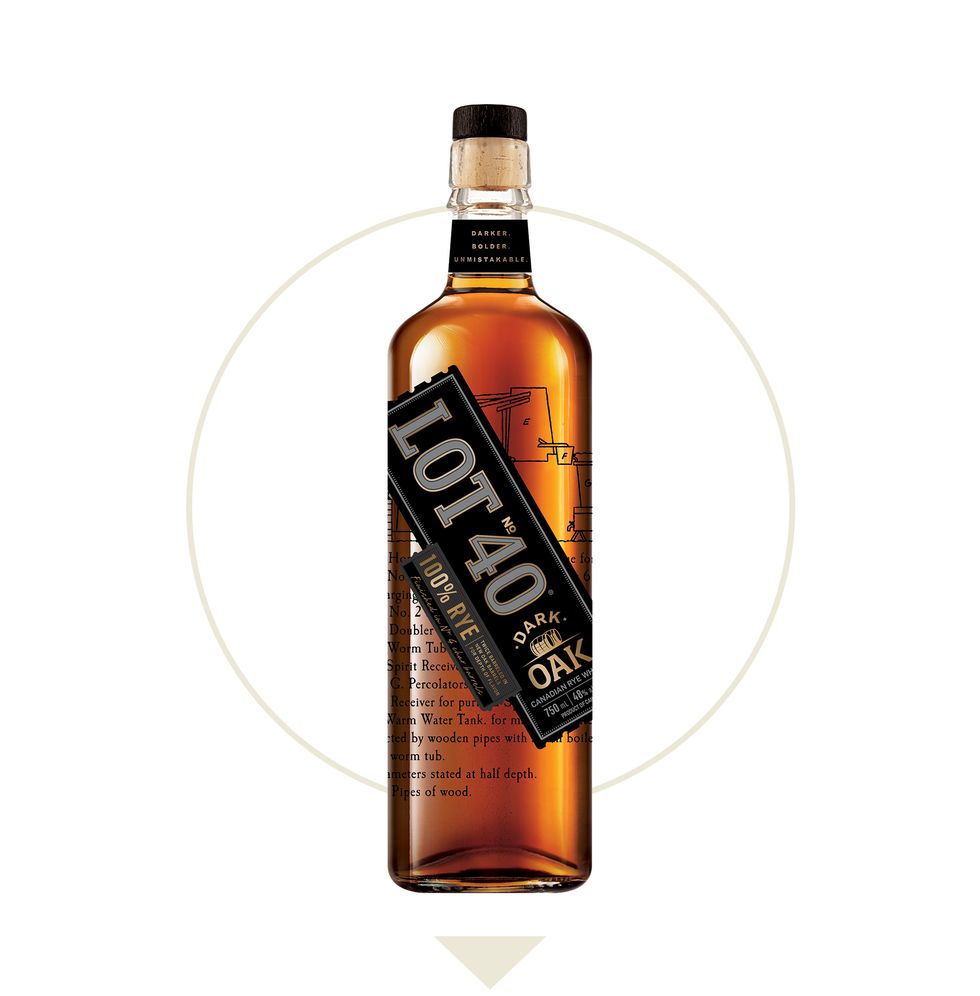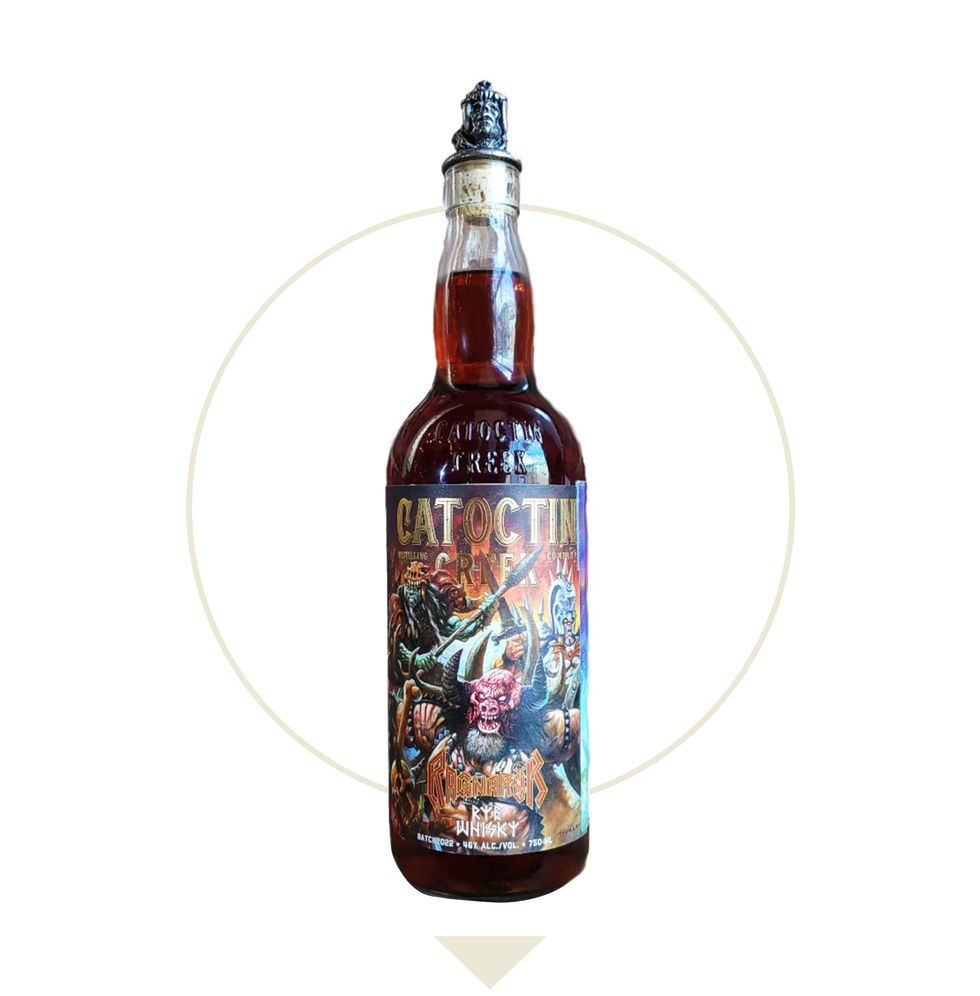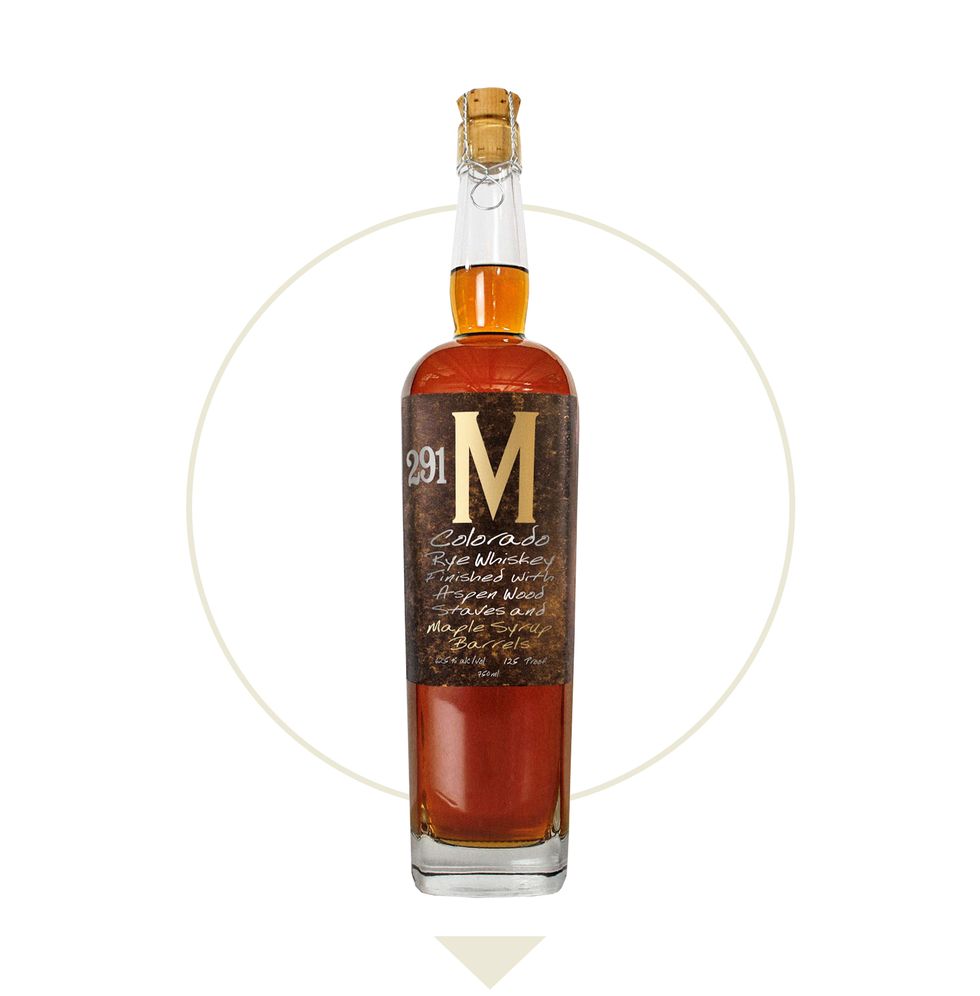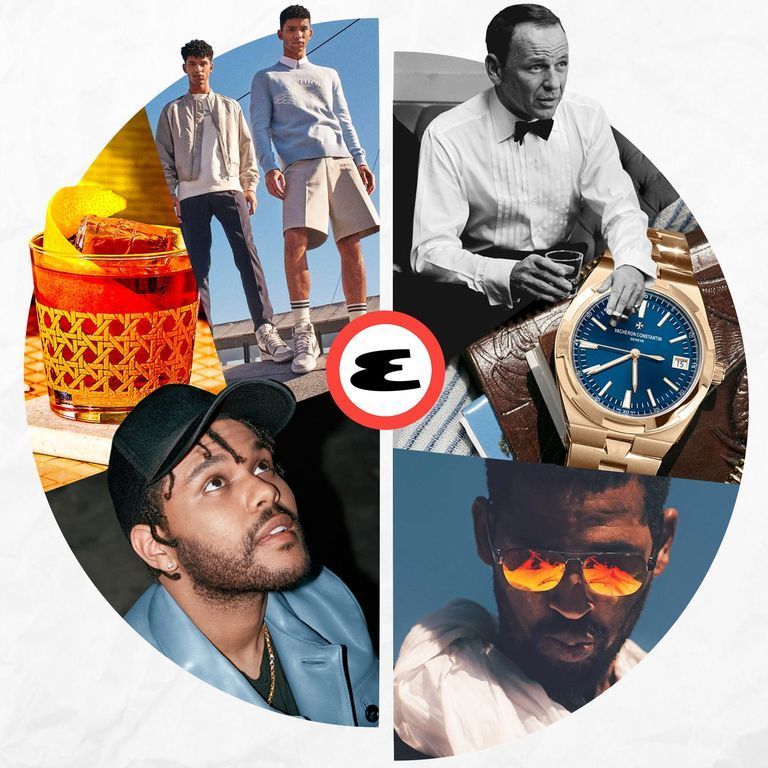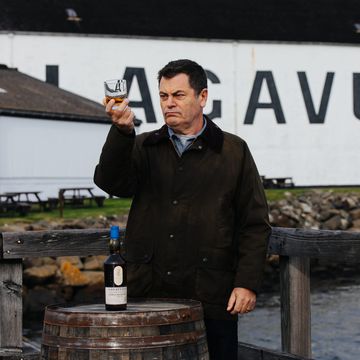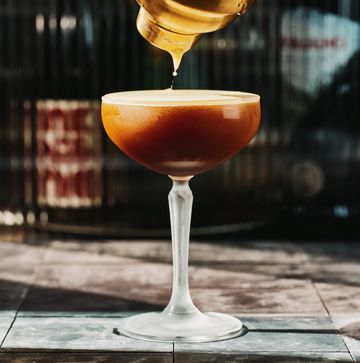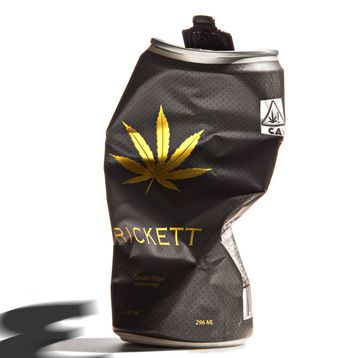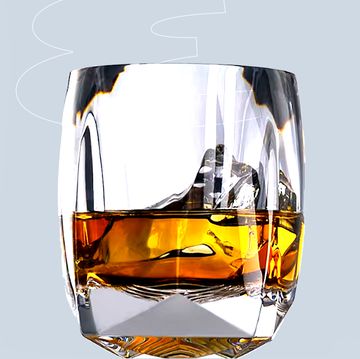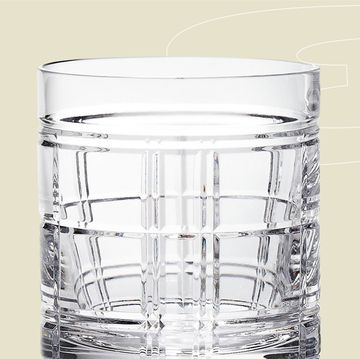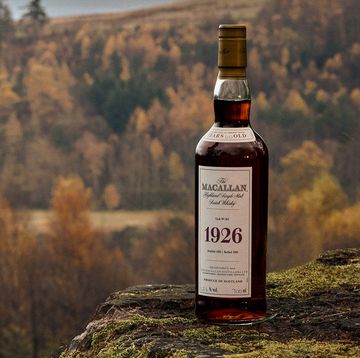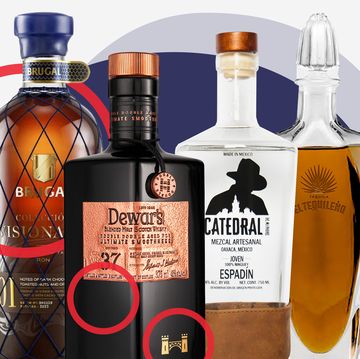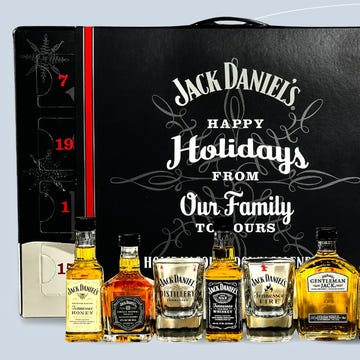Once upon a time, rye whiskey was extremely popular in America, particularly before the buzzkill that was Prohibition. But in the years that followed the dry spell, rye got a reputation as an inferior spirit, if it was even considered at all. Those days are long gone, and over the last decade the rye has become the whiskey du jour with both craft and longstanding distilleries releasing their own versions of bourbon’s spicier sister.
The rules for American rye whiskey are simple: the mash bill must be at least 51 percent rye (whiskeys released at this percentage are sometimes referred to as “barely legal”), it must be distilled to no more than 160 proof, and it must be aged in new charred oak containers (virtually always barrels). Unlike bourbon, flavor and coloring actually can be added to rye whiskey, unless it is designated as "straight" rye whiskey (which also means that it’s at least two years old), so stick to that just to be safe.
A lot of the rye whiskey on the market under various brand names comes from MGP, an historic, factory-like distillery in Lawrenceburg, Indiana that specializes in making whiskey with a 95 percent rye/5 percent malted barley mash bill. Brands like Templeton, Bulleit, Smooth Ambler, James E. Pepper, and many others source their rye from here. MGP has been making rye since well before it regained its popularity, and this distillery definitely knows what it’s doing. That being said, there was a period when some brands were not so transparent about where their whiskey was made, leading to blowback from whiskey drinkers. For the most part, this practice has faded, and brands sourcing from MGP that don’t at least put “distilled in Indiana” on their labels get called out frequently and loudly. MGP also has its own excellent in-house rye whiskey brand called Rossville Union.
There are also plenty of rye whiskeys being made in Kentucky, New York, Colorado, and every other state in the union, with mash bills ranging from 51 to sometimes 100 percent rye. And yes, there are many craft distilleries making commendable rye whiskeys, including Wigle, 291 Distillery, and Hotaling & Co. These smaller operations are starting to really compete with the old guard as far as quality and age of the whiskey. Here are ten of the best (and most readily available) rye whiskeys you can find today.
Wild Turkey/Russell’s Reserve
Wild Turkey isn’t necessarily the first name that comes to mind when thinking about rye whiskey, but it has been a part of the distillery’s portfolio since the 1950s (initially sourced, then distilled in-house starting in the ‘70s). According to master distiller Eddie Russell, rye was never a preferred style of his father, legendary master distiller Jimmy Russell, but his son Bruce is a huge fan and has been getting more involved in recent years. Up until 2012, the 101-proof version, with a mash bill containing about the legally required 51 percent rye, was the core rye expression. There’s also an 81-proof version (it’s fine, but stick with the 101) as well as single barrel and six-year-old smaller batch rye whiskeys under the Russell’s Reserve name. There have been some new additions to Wild Turkey's rye lineup in recent years, including the high-end Master’s Keep Cornerstone Rye, a blend of nine- to 11-year-old whiskey bottled at 109 proof. More recently, the distillery added a barrel-proof rye to its Rare Breed label, and the 2022 Master’s Keep release, Unforgotten, is a blend of bourbon and rye–an older sibling to Forgiven, which came out a decade ago.
Sazerac Rye
This rye whiskey shares its name with the famous cocktail and the parent company that owns the distillery it is produced at, Buffalo Trace. It’s an inexpensive, but excellent whiskey, with that Kentucky-style mash bill of just about 51 percent rye grain making it a sweeter and less spicy option than some others. This is a workhorse whiskey (meant with all due respect) that is a must-have for any home bartender who wants to make cocktails. Now, if you have the cash to spend, there are a couple of other rye whiskeys that are released as part of the annual Buffalo Trace Antique Collection. The first is the 18-year-old version of Sazerac Rye, which varies from year to year but is usually quite impressive. The second is Thomas H. Handy Sazerac, an uncut and unfiltered barrel-proof version of the rye. Both of these are pretty hard to get and ridiculously expensive if you do find them, but this fall is bottle hunting season, so good luck!
Old Overholt
The Old Overholt name has been around since the late 1800's, but the brand has belonged to Jim Beam since 1987. A few years ago, some big changes were made to the lineup, with a recent welcome update to the core expression. This whiskey is now bottled at four years old instead of three (supposedly inspired by its age in the 1940's), the proof increased to 86, and no chill filtration. This is a really good cheap rye whiskey, and a favorite of many bartenders with just a bit of spice to counter the sweetness from the corn making it a solid and inexpensive cocktail option. There’s also Old Overholt Bonded Rye, which is at least four years old and 100 proof per the bottled-in-bond definition (also now non-chill filtered). And newer to the family are Old Overholt 114 Proof, a nod to Beam’s Old Grand-Dad 114, as well as a more expensive and difficult to find 11-year-old version that is a deep and complex sipper.
WhistlePig
WhistlePig has been a leader in the premium rye category since it was founded over a decade ago. The Vermont distillery has been using some of its own in-house produced whiskey in its FarmStock series over the past few years, and the Beyond Bonded whiskey is entirely produced at the distillery, but the majority of the whiskey is sourced from Canada and Indiana. When it reaches the WhistlePig distillery and farm in Vermont, it’s blended and put into various barrel types for further aging. A few years ago, the oldest WhistlePig whiskey thus far was released, the 18-year-old WhistlePig Double Malt. Most recently, the distillery put out the even more expensive Boss Hog IX: Siren’s Song. This is a wonderfully weird but altogether intriguing single-barrel rye whiskey. The aged liquid comes from Canada, then is placed into fig nectar and Greek-style tentura liqueur barrels for a brief secondary maturation period. The rye whiskey character comes to the brink of being overpowered but pulls back at the last minute, with strong notes of fig, spice, incense, and honey.
Sagamore Spirit
Maryland’s Sagamore Spirit isn’t an exact replica of the style of rye that once dominated that state, but it’s making some pretty good whiskey all the same. And yes the distillery, founded by the guy who ran Under Armour, is actually making its own whiskey and bottling it these days as well as sourcing liquid from MGP in Indiana. In fact, the bottled-in-bond release that came out a few years ago, entirely produced in-house, was one of the best releases from Sagamore Spirit so far. The core rye expression is a blend of two mash bills, high rye and low rye, aged from four to six years. There are also a slew of cask-finished expressions, and this fall’s release docket is pretty busy–bottles on the way include a sherry cask finish, the Creator’s Cask blend of 7-year-old whiskeys selected by some Instagram influencers (I know, I know, but it’s a good whiskey!), a five-year-old new version of the bottled-in-bond, and a young Maryland Grown release made from local grain and aged in barrels made from Maryland oak trees.
High West
High West, located in Utah, specializes in sourcing whiskey (mostly rye, but also bourbon) from distilleries in Kentucky and Indiana, coming up with interesting blends and often finishing the liquid in various barrel types. The distillery has also been incorporating some of its own in-house distilled rye whiskey into recent releases of the core lineup standouts Double Rye. and Rendezvous Rye. Check out limited-release expressions like A Midwinter Night’s Dram Act 10 Scene 1, a blend of rye finished in port barrels, and Bourye, a blend of bourbon and rye whiskeys. The distillery also has an American Single Malt called High Country and a bottled barrel-aged Manhattan and Old Fashioned available. But rye is really the specialty of this distillery and blending house, so give those bottles a try to start.
Redemption Whiskey
Redemption is another brand that doesn’t make its own whiskey; instead it sources from MGP in Indiana as so many others do like Bulleit Rye, James E. Pepper, and the aforementioned Sagamore Spirit. But the rye whiskey that Redemption sources and blends is very good, and there are a few different styles to try (as well as some bourbon if you’re in the mood). The rye is made using the 95 percent mash bill style that MGP is known for, meaning there’s a nice kick of black pepper and spice on the palate. There are some interesting cask finishes to check out as well, including cognac and rum, along with some unique single barrel releases. The most interesting new bottle is called Sur Lee, which was made using a French winemaking technique as inspiration and adds the “whiskey lees,” or backset, that remains in the still after distillation into the barrels to age with the new make spirit. Of note–expect a big change in the Redemption bottle design, because drinks giant Diageo recently won an intellectual property suit that claimed they looked too much like Bulleit Bourbon.
Lot 40
It wouldn’t really be fair to list a bunch of rye whiskeys and not include one Canadian entry in the mix. This whisky (spelled without the “e” up north) is an actual rye whisky, made from a mash bill of 100 percent rye. In Canada, nearly any whisky can be called rye, but this is the real deal made at the Hiram Walker Distillery just over the border from Detroit. Give this a try, but don’t expect the whisky to taste like American rye because the palate is very different due to the maturation and distillation process in Canada. The brand just launched a new expression as well called Dark Oak, a higher-proof whiskey that is initially aged in new oak barrels with a number two char, then given a secondary maturation in char number four barrels–a heavier char that imbues the whisky with a new round of oak, caramel, and pecan flavors to balance out the fruit and spice.
Catoctin Creek
Another craft distillery with a strong focus on rye whiskey is Virginia’s Catoctin Creek (they’ve even trademarked the term “The Virginia Rye Whiskey”). Founders Scott and Becky Harris (she’s also the chief distiller) are committed to making high quality, small batch rye whiskey that doesn’t lack in flavor or complexity. Some of these are young and relatively low ABV, like the 80 proof flagship Roundstone Rye, a nice sipping whiskey or Manhattan building block. All are made from a 100 percent rye mash bill, like the bottled-in-bond Rabble Rouser Rye, a 100 proof, four-year-old whiskey that explodes with spice and fruit. If you’re in the mood for a rock band tie-in whiskey, Catoctin Creek released Ragnarök Rye last year, a collab with costumed metal band Gwar. The latest edition was aged in new charred oak, cherrywood, and sugar maple. There are some other limited releases from the distillery as well, like the Braddock Oak Single Barrel and annual cask strength version of Roundstone Rye that is finished in a maple syrup barrel.
Distillery 291
Colorado has fully become a whiskey state, with a bunch of excellent distilleries that are making all types of whiskey from bourbon to single malt to, of course, rye. Distillery 291 is located in Colorado Springs, and was founded by ex-photographer Michael Myers. What makes these whiskeys stand out is that most of them are finished with aspen wood staves, a secondary maturation process that puts wood literally in the whiskey instead of whiskey in new wood barrels to add a touch of flavor to the liquid. There are several new whiskeys to try this fall from the distillery, including a high-proof single barrel rye whiskey finished in maple syrup barrels called M, the newest batch of a collaborative effort with whiskey consultant Marianne Eaves called E, and a brand-new release called All Rye. These are truly unique and powerful whiskeys that make an impression, so if you’re a fan of bourbon’s spicier sister give these a try.
